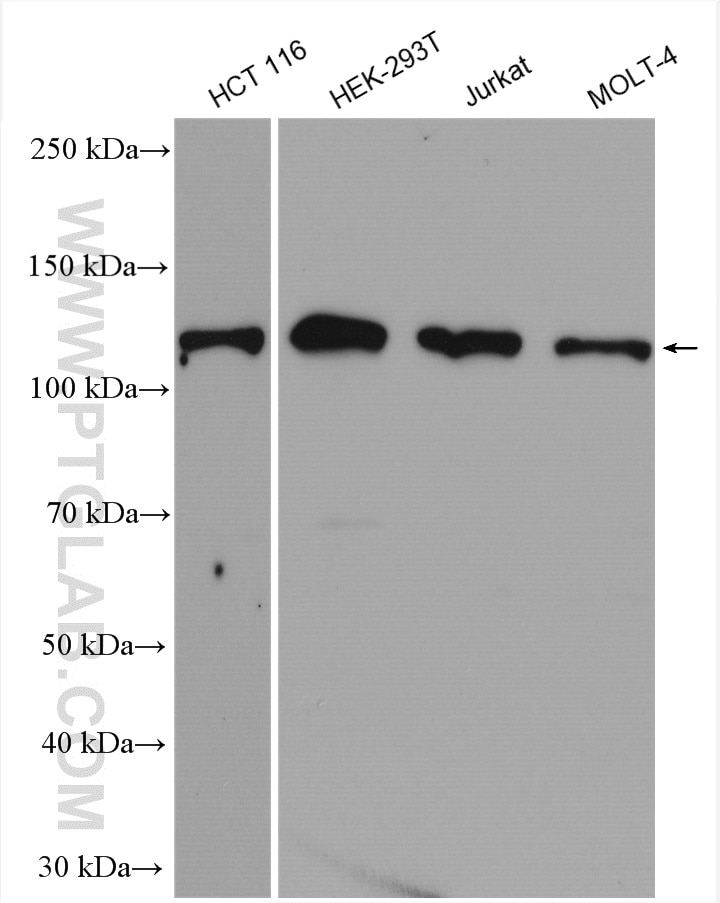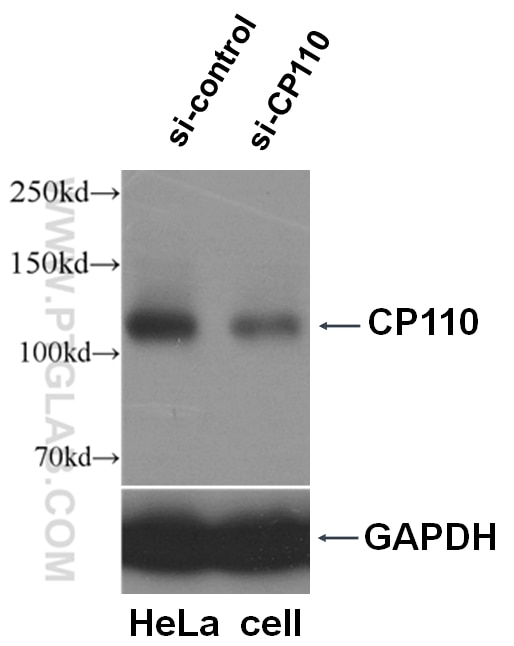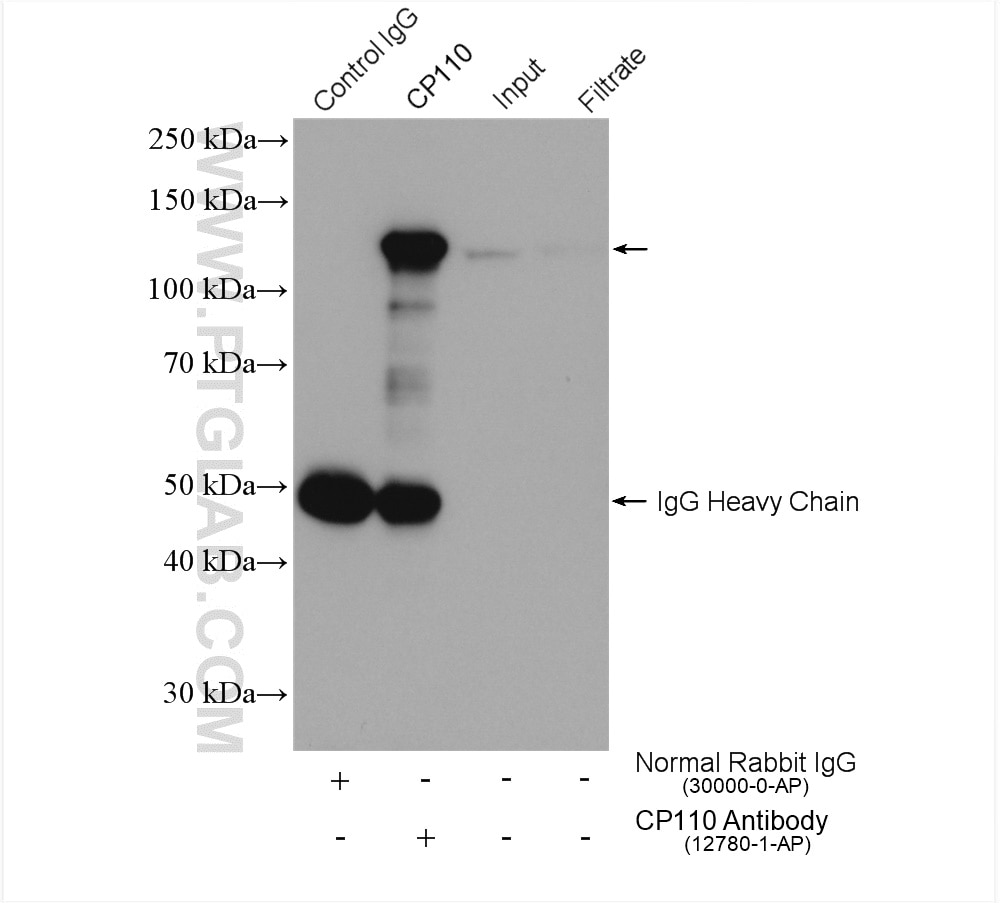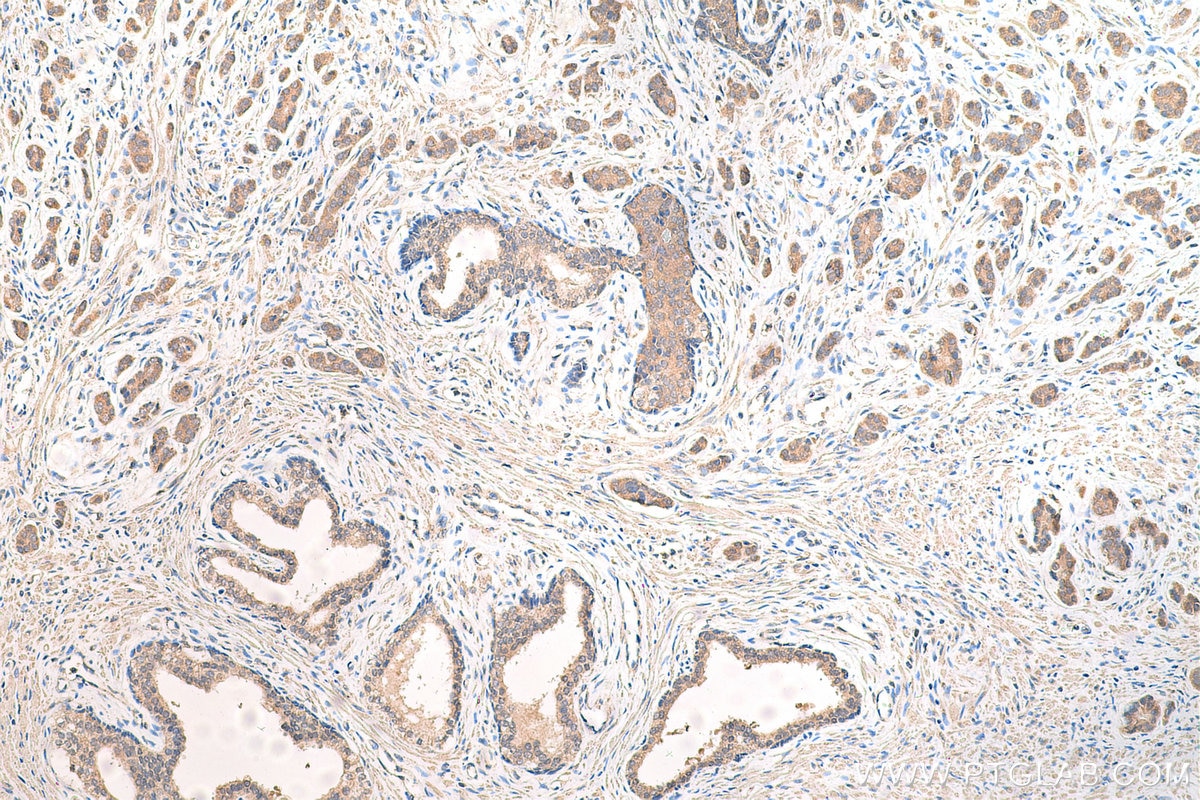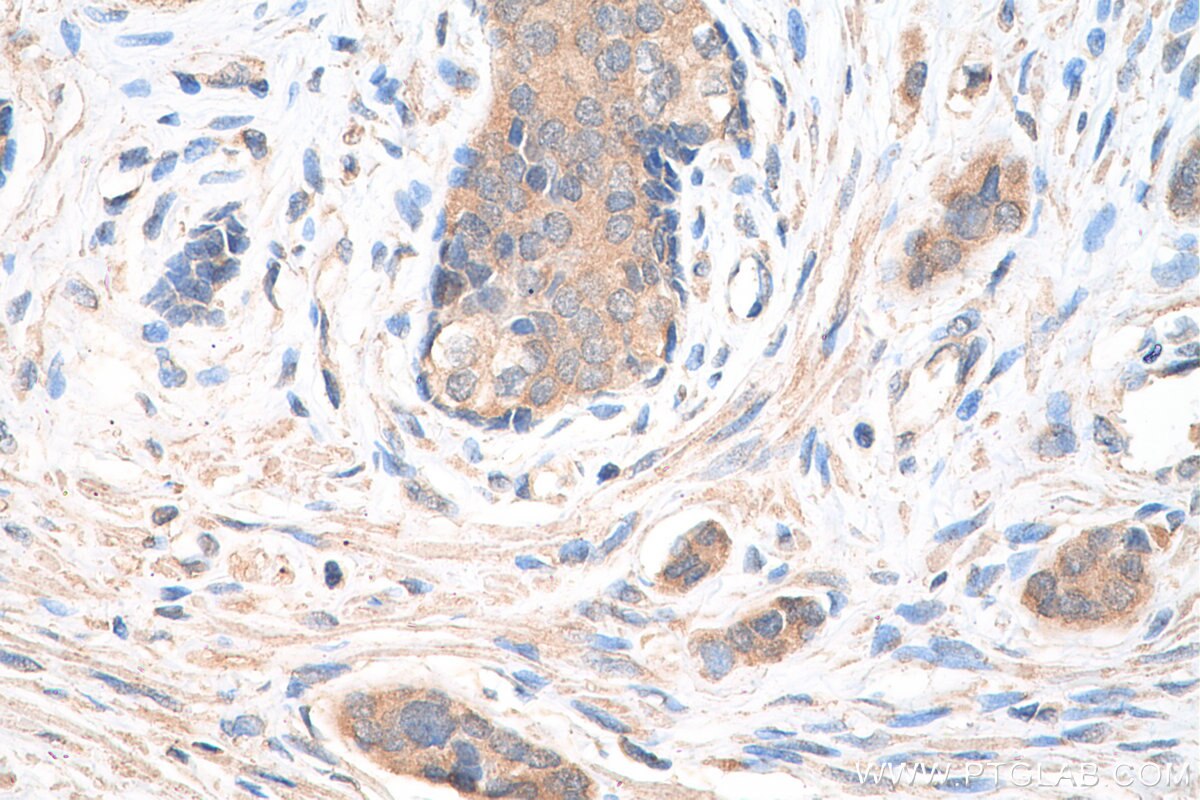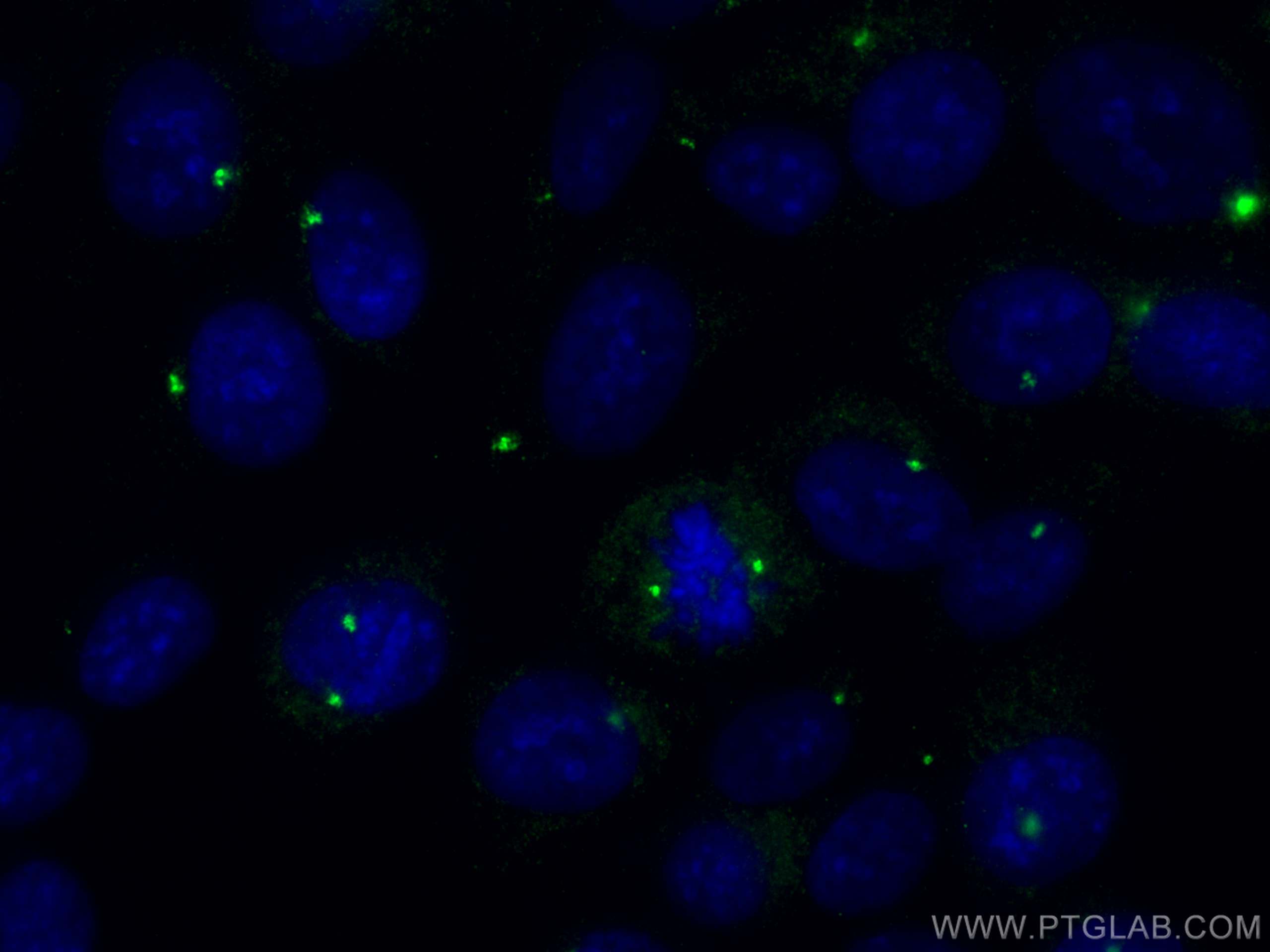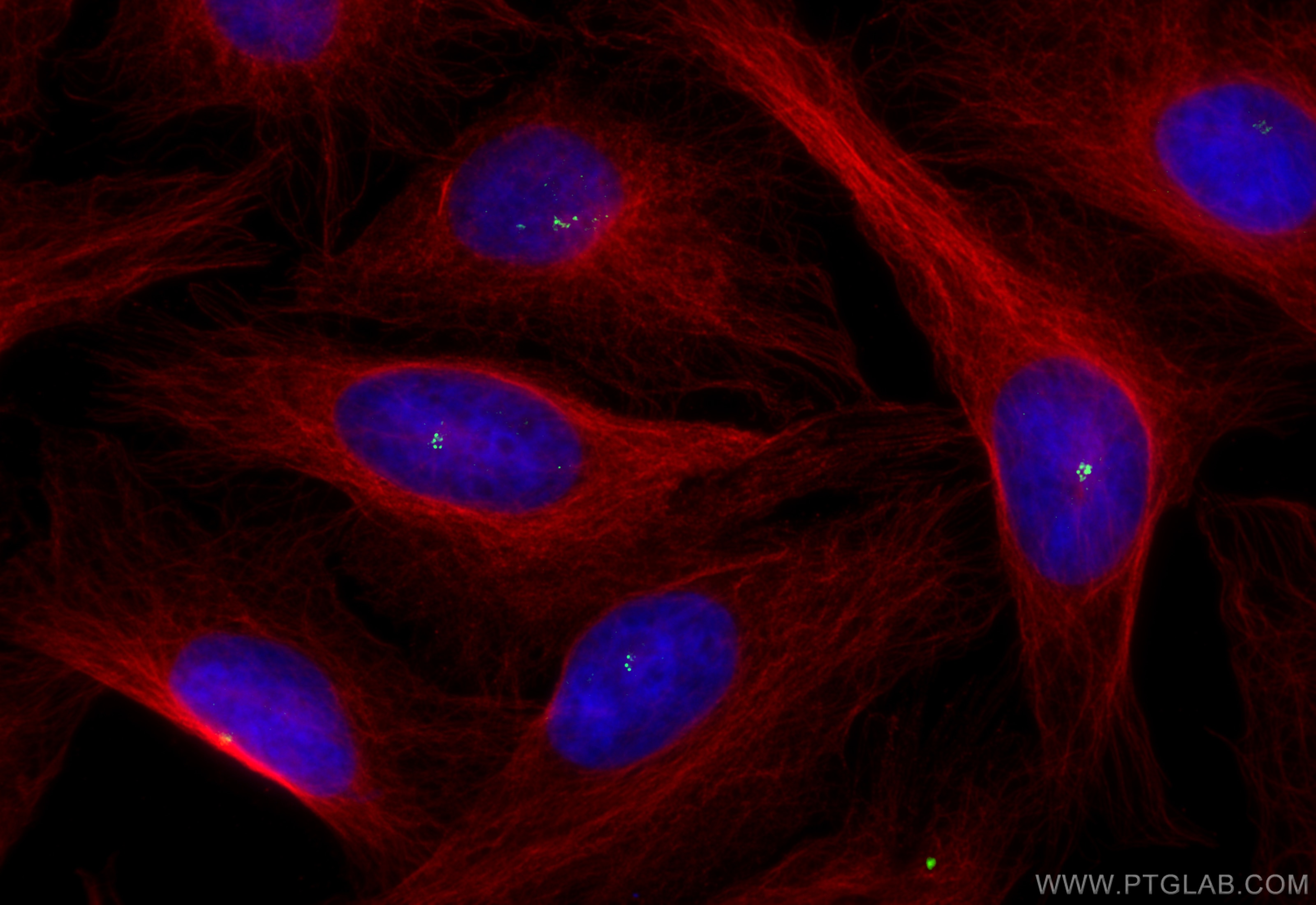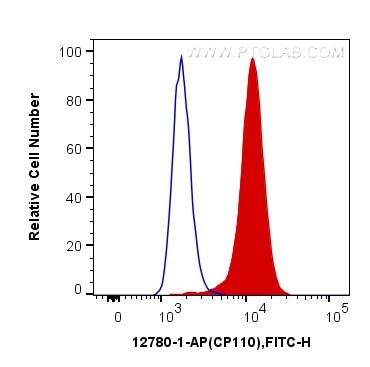- Phare
- Validé par KD/KO
Anticorps Polyclonal de lapin anti-CP110
CP110 Polyclonal Antibody for WB, IHC, IF/ICC, FC (Intra), IP, ELISA
Hôte / Isotype
Lapin / IgG
Réactivité testée
canin, Humain, rat, souris et plus (3)
Applications
WB, IHC, IF/ICC, FC (Intra), IP, ELISA
Conjugaison
Non conjugué
N° de cat : 12780-1-AP
Synonymes
Galerie de données de validation
Applications testées
| Résultats positifs en WB | cellules HCT 116, cellules HEK-293T, cellules HeLa, cellules Jurkat, cellules MOLT-4 |
| Résultats positifs en IP | cellules Jurkat, |
| Résultats positifs en IHC | tissu de cancer de la prostate humain, il est suggéré de démasquer l'antigène avec un tampon de TE buffer pH 9.0; (*) À défaut, 'le démasquage de l'antigène peut être 'effectué avec un tampon citrate pH 6,0. |
| Résultats positifs en IF/ICC | cellules hTERT-RPE1, cellules U2OS |
| Résultats positifs en FC (Intra) | cellules HeLa |
Dilution recommandée
| Application | Dilution |
|---|---|
| Western Blot (WB) | WB : 1:2000-1:12000 |
| Immunoprécipitation (IP) | IP : 0.5-4.0 ug for 1.0-3.0 mg of total protein lysate |
| Immunohistochimie (IHC) | IHC : 1:250-1:1000 |
| Immunofluorescence (IF)/ICC | IF/ICC : 1:50-1:500 |
| Flow Cytometry (FC) (INTRA) | FC (INTRA) : 0.20 ug per 10^6 cells in a 100 µl suspension |
| It is recommended that this reagent should be titrated in each testing system to obtain optimal results. | |
| Sample-dependent, check data in validation data gallery | |
Applications publiées
| KD/KO | See 7 publications below |
| WB | See 42 publications below |
| IHC | See 1 publications below |
| IF | See 132 publications below |
| IP | See 6 publications below |
Informations sur le produit
12780-1-AP cible CP110 dans les applications de WB, IHC, IF/ICC, FC (Intra), IP, ELISA et montre une réactivité avec des échantillons canin, Humain, rat, souris
| Réactivité | canin, Humain, rat, souris |
| Réactivité citée | rat, canin, Drosophile, Humain, poisson-zèbre, souris, xénope |
| Hôte / Isotype | Lapin / IgG |
| Clonalité | Polyclonal |
| Type | Anticorps |
| Immunogène | CP110 Protéine recombinante Ag3489 |
| Nom complet | CP110 protein |
| Masse moléculaire calculée | 991 aa, 111 kDa |
| Poids moléculaire observé | 113 kDa |
| Numéro d’acquisition GenBank | BC036654 |
| Symbole du gène | CP110 |
| Identification du gène (NCBI) | 9738 |
| Conjugaison | Non conjugué |
| Forme | Liquide |
| Méthode de purification | Purification par affinité contre l'antigène |
| Tampon de stockage | PBS with 0.02% sodium azide and 50% glycerol |
| Conditions de stockage | Stocker à -20°C. Stable pendant un an après l'expédition. L'aliquotage n'est pas nécessaire pour le stockage à -20oC Les 20ul contiennent 0,1% de BSA. |
Informations générales
CP110, also named as CCP110 and KIAA0419, is an 110kDa protein. This gene is different to the gene CEP110 (geneID:11064; CNTRL). CP110 is a centriolar protein that positively regulates centrioleduplication while restricting centriole elongation and ciliogenesis. And it acts as a key negative regulator of ciliogenesis in collaboration with CEP97 by capping the mother centriole thereby preventing cilia formation.
Protocole
| Product Specific Protocols | |
|---|---|
| WB protocol for CP110 antibody 12780-1-AP | Download protocol |
| IHC protocol for CP110 antibody 12780-1-AP | Download protocol |
| IF protocol for CP110 antibody 12780-1-AP | Download protocol |
| IP protocol for CP110 antibody 12780-1-AP | Download protocol |
| Standard Protocols | |
|---|---|
| Click here to view our Standard Protocols |
Publications
| Species | Application | Title |
|---|---|---|
Science A liquid-like spindle domain promotes acentrosomal spindle assembly in mammalian oocytes. | ||
Nature USP33 regulates centrosome biogenesis via deubiquitination of the centriolar protein CP110. | ||
Nat Nanotechnol Intrinsic bioactivity of black phosphorus nanomaterials on mitotic centrosome destabilization through suppression of PLK1 kinase. | ||
Nat Cell Biol miR-129-3p controls cilia assembly by regulating CP110 and actin dynamics.
| ||
Nat Cell Biol CEP162 is an axoneme-recognition protein promoting ciliary transition zone assembly at the cilia base. | ||
Nat Cell Biol The Cep63 paralogue Deup1 enables massive de novo centriole biogenesis for vertebrate multiciliogenesis. |
Avis
The reviews below have been submitted by verified Proteintech customers who received an incentive for providing their feedback.
FH Elisa (Verified Customer) (01-05-2023) | RPE1 cells stained for Hoechst (DNA marker, in green), CP110 (in magenta) and gtub (pericentriolar matrix marker, in green). RPE1 cells were fixed in cold methanol for 10' at -20C. Cells were then rehydrated with PBS for 5'. Membrane permeabilization was then performed with 0.1% Triton + 0.1% Tween +0.01%SDS in PBS for 5'. Cells were finally incubated with blocking buffer (5% BSA+ 0.1% Tween in PBS) for 30' at RT. Primary antibody was diluted in blocking buffer 1:200 and incubated for 1h at room temperature. Alexa-488-Anti-rabbit was used as secondary antibody (1:600 dilution) (1h at room temperature).
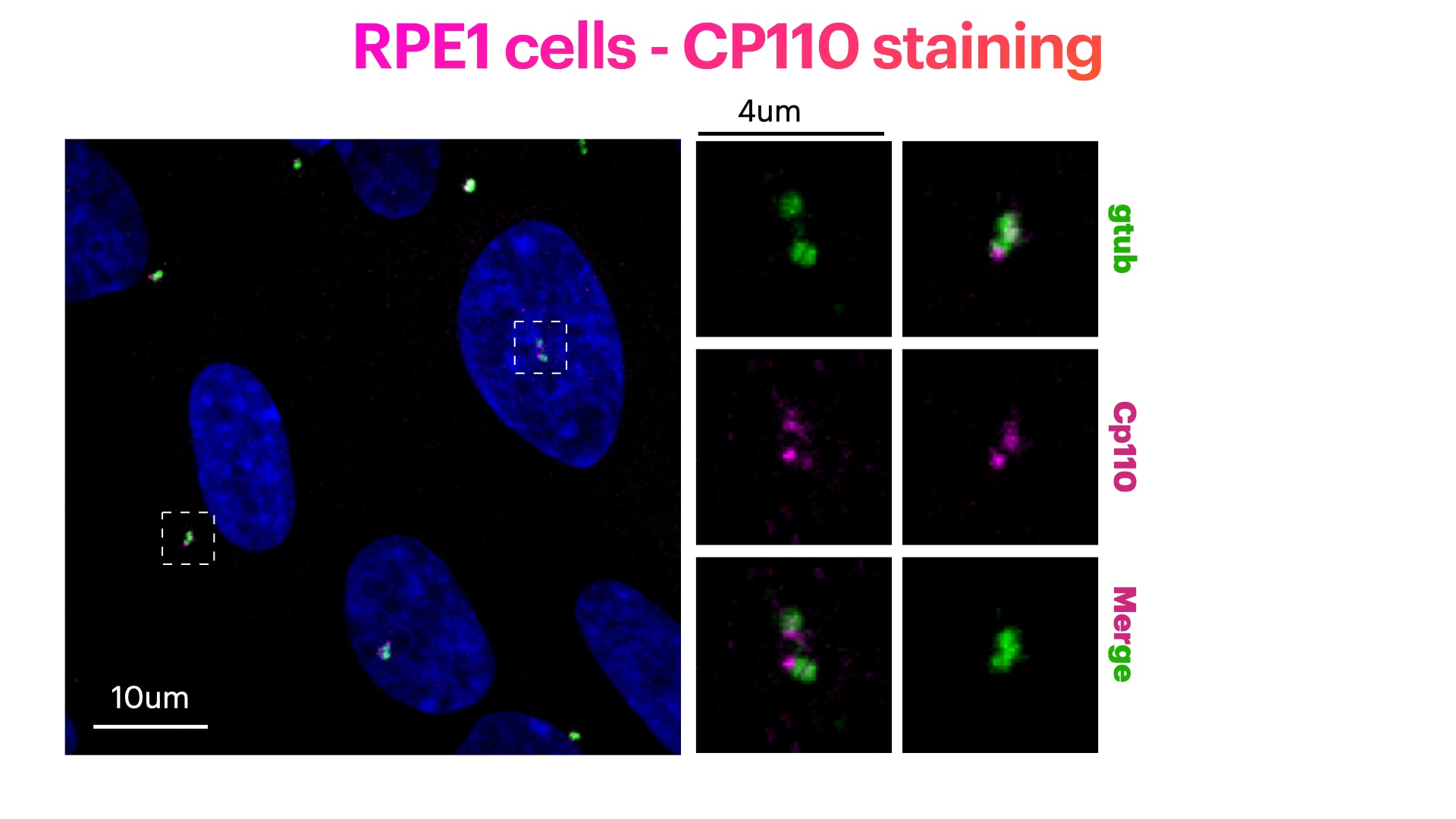 |
FH Sarah (Verified Customer) (02-16-2021) | Works very well for detection of CP110 protein using western blotting and immunfluorescence
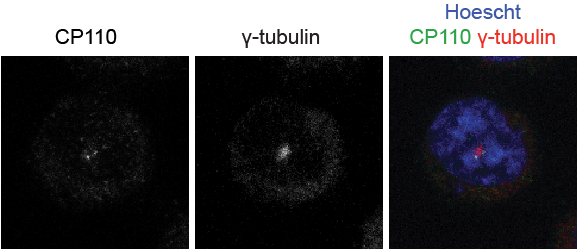 |
FH EK (Verified Customer) (05-04-2020) | works well for immunofluorescence detection of basal body localization
|
